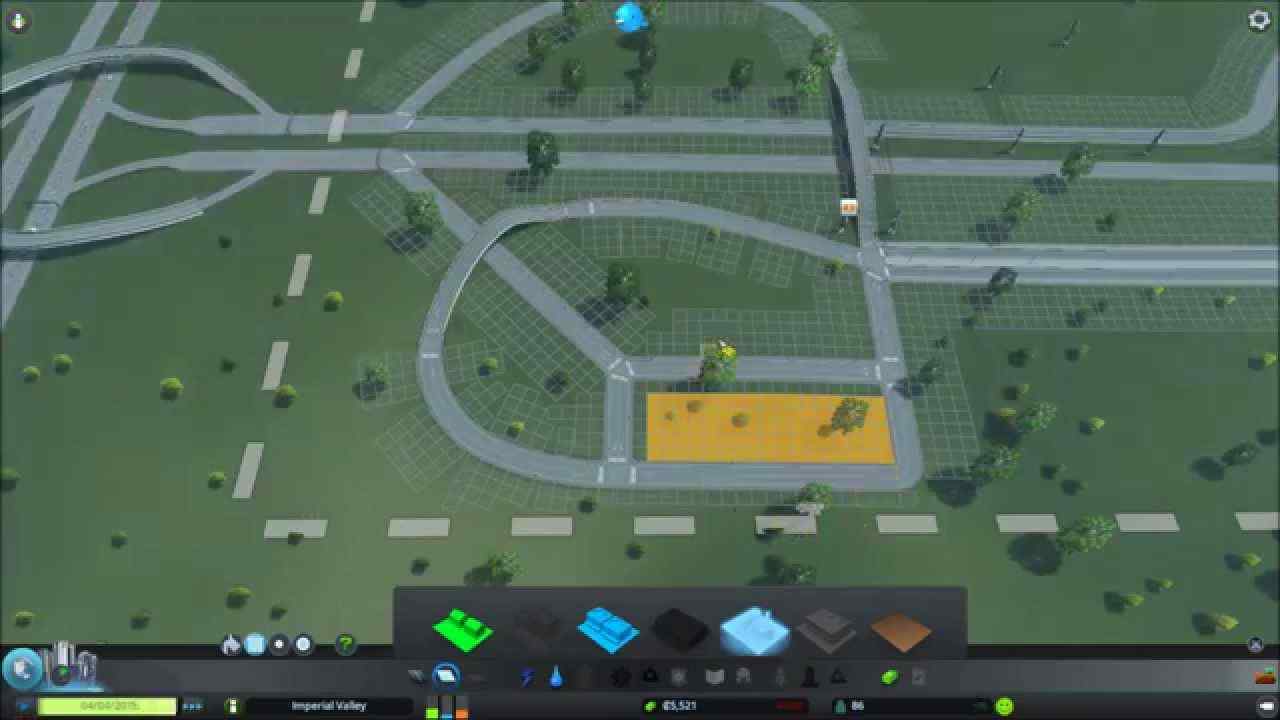Hello, players! Or should we say, city owners? As you probably already know, Cities: Skylines is a city-building simulation game that requires you to have managerial and construction skills. In this game, the goal is to build a prosperous city whose citizens will enjoy living in it.
In addition, you, as the owners of the cities, must control the budget, take care of the pollution of the city, protect the health of the citizens and at the same time develop the city in order to avoid stagnation. In this article, we will talk about building an entirely new city in Cities: Skylines, so let’s start with these helpful tips.
Cities: Skylines has been at the top of the list of popular games for several years now, and we believe it will stay there. In this game, you have to show that you can build and lead an urban environment of seemingly satisfied citizens. You can download this game on the Steam official site. The game is available in the PC version and in versions for Xbox One, Nintendo Switch, and PS4 game consoles. Download it today and embark on this interesting adventure to become the most successful mayor of all time.
Also Read: How to Fix Sewage Backup in Cities: Skylines?
Starting a New City in Cities: Skylines
First, you have to select the map you want to play from the Main Menu. It can be one of the maps from the game, or you can download the custom maps from the Steam Workshop site. Of course, you can make a map of the city of your choice. The decision is up to you.
After that, you have to place road tiles to unlock new roads. Try place roundabouts because they reduce the city congestion that is created due to highways. Connect roundabout with one-way streets, build a small road and upgrade it. Take care of good connections of roads with industrial, residential, and commercial buildings located nearby.
Then you can place a coal power plant that will generate electricity in the industrial zone. Be careful not to be near residential buildings because it creates a lot of pollution. Also, bring the coal power plant closer to the Highway so that trucks can transport coal via roads.
After electricity, let’s go to water sources. It would be best if you placed a water pumping station upstream and downstream place the water drain pipe. Water Pumping Station will pump drinking water from available water sources to the city. The Water Pumping Station cannot work correctly without a water drain pipe so place them both. In order for water to reach city buildings, it is necessary to connect the city with pipes through which water will flow. Also, connect stations with electric energy.
Now, let’s move on to residential and commercial areas. Residential and commercial areas should be away from industrial areas; otherwise, citizens may become ill because the area around industrial areas is polluted.
Industrial areas are set up near highways as goods from there will have to be delivered to buildings. Also, all exports and imports will take place on the roads, so it is much easier if the industrial areas are located near roads.
Under the Economy tab sets the spending of money from the budget. Since this is a new city, you can reduce your budget for water, energy, and roads. You will easily increase them later when your city is more developed. Your city will slowly start to develop, and thus receive an inflow of money into the city budget. As the city develops, you can slowly begin to expand it.

Add some more industrial buildings to create new jobs and increase production, and then you can create new residential and commercial areas. When you reach the first milestone, you will be able to build new buildings that will be unlocked for you. For example, a school building. It attracts families with children to your city and educates children. If you want your city to profit more under the Economy tab, reduce the budget intended for education.
Also, check for citizen demands. Your citizens will have special requirements, and they will want certain types of buildings to be built in the city.
And don’t forget to increase the budget if there is a problem with water or energy. You have to occasionally check all your buildings to see how they operate, whether anything needs to change, and whether a particular building contributes to your city. Sometimes, due to inaccessible roads, it can happen that the building is not fully functional, and therefore it will be useless.
Remember, as your city grows and gets more money, you will have to expand it.
After some time, build the landfill site where trucks will pick up trash produced by buildings in your city. Landfills should also be built away from residential areas as their proximity affects citizens’ quality of life and health. Furthermore, build a fire department for your city.
Place it near your factories because factories can often be affected by the fire. Then goes the police station. Police cars are circling the city and keeping an eye on crime rates. Build a police station in the city center, so it will be easiest for police cars to patrol the busiest parts of the city.
Now you have already reached your next milestone, and some new buildings will be available to you, such as high school. Like elementary school, the high school educates children in your city. Remember that only highly educated citizens can work in some higher-level industries, so you need to have enough educational buildings in your city.
Buildings have their weekly cost, so your city needs to receive enough money in the budget so that all the buildings built can be financed weekly. Periodically check the Economy tab to be able to increase or decrease the budget for certain buildings in the city. This is important for saving money in the city budget and improving the quality of life of your citizens.
In addition to schools and security buildings, such as the police department and fire department, it is vital to build health facilities because health is the most essential item of your citizens. Place a medical clinic in the city center and reduce the budget again under the Economy tab. You will increase it later; for now, you do not need many free beds in the medical clinic.
Watch your city grow and develop. As you raise more money, you can start with additional expansions. Expand roads, build new factories, commercial buildings and add new residential areas so that new people can settle. At the same time, pay attention to the construction of public transport, arranging the city, and expanding watercourses to supply the city with drinking and clean water.
Don’t forget garbage and sewage, and it is important to manage waste collection and recycling. You will later unlock additional buildings that will contribute to your city.
Follow these pieces of advice and build a new city today.
Also Read: How to Use Natural Resources in Cities: Skylines?
Final Thoughts
Starting a new city in Cities: Skylines is an exciting event. You start from the very beginning with the development of urban areas and population settlement. It is important to focus on the traffic connectivity of all areas in your city so that you make enough roads first. Then create an industrial zone that will be close to the highways because it will be the fastest to import and export goods. The industrial zone pollutes the city, so keep it away from residential and commercial areas.
At the same time, manage your budget by checking the Economy tab regularly and increasing or decreasing your budget as needed. As your city progresses, so will your city budget. Slowly expand it and add new buildings, and also meet the demands of its citizens who will demand the construction of certain buildings or areas.
Good luck in building a new city!



